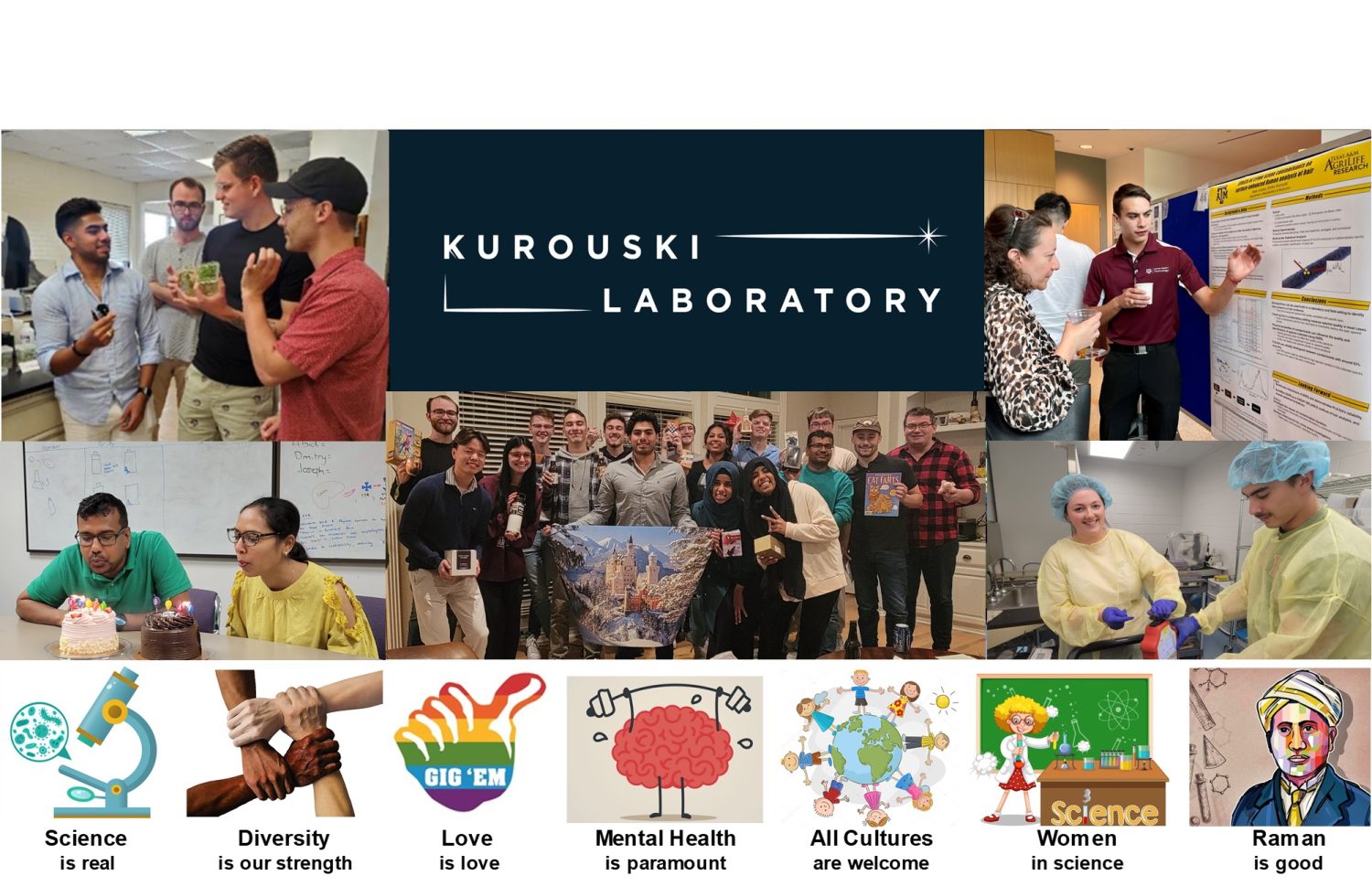Kurouski group has four major interconnected but independent research projects.
1. Elucidating the role of lipids in neurodegeneration

We aim to reveal the extent to which lipids can alter the rates of protein aggregation, change the secondary structure and toxicity of amyloid oligomers and fibrils.
To answer this question, we:
● Express and purify amyloidogenic proteins, such as α-synuclein, transthyretin and amyloid β.
● Utilize thioflavin T assay to investigate rates of protein aggregation.
● Employ nano-Infrared spectroscopy to unravel secondary structure of individual oligomers and fibrils
● Use cell toxicity assays to determine toxicity of amyloid oligomers and fibrils, as well as unravel mechanisms by which these protein specimens exert cell toxicity.
2. Optical sensing of plant diseases

We develop and deploy innovative spectroscopic approaches to enable non-invasive, non-destructive, and confirmatory diagnostics of biotic and abiotic stresses in plants.
● Our results demonstrate that Raman spectroscopy, an emerging analytical technique can be used for identification of viral, bacterial and fungal diseases in plants.
● Raman sensing can be also used to detect and identify salinity stress, as well as nutritional deficiencies in plants.
● Our recent findings demonstrated that Raman spectroscopy can be also used to differentiate between different plant species and their varieties.
● Furthermore, using a hand-held Raman spectrometer, one can identify plant resistance to herbicides and pathogens, such as nematodes. This allows for the use of Raman sensing in digital plant breeding.
3. Mechanisms of plasmon-driven catalysis on mono and bimetallic nanostructures.

Hot carriers are highly energetic species that can perform a large spectrum of chemical reactions. They are generated on the surfaces of nanostructures by the decay of localized surface plasmon resonances (LSPRs), which are coherent oscillations of conductive electrons. LSPRs can be induced on the surface of noble metal (Ag or Au) nanostructures by illuminating the surfaces with electromagnetic irradiation. These noble metals can be coupled with catalytic metals, such as Pt, Pd, and Ru, to develop bimetallic nanostructures with unique catalytic activities. The plasmon-driven catalysis on bimetallic nanostructures is light-driven, which essentially enables green chemistry in organic synthesis.
Our group uses tip-enhanced Raman spectroscopy (TERS), a modern analytical technique that has single-molecule sensitivity and sub nanometer spatial resolution, to unravel mechanisms of plasmon-driven reactions.
● We found that plasmonic reactivity and the selectivity of bimetallic nanostructures were governed by the nature of the catalytic metal and the strength of the rectified electric field on their surfaces.
● TERS has also revealed that the catalytic properties of bimetallic nanostructures directly depend on the interplay between the catalytic and plasmonic metals.
● We anticipate that these findings will be used to tailor synthetic approaches that are used to fabricate novel nanostructures with desired catalytic properties.
4. Forensic analysis of artificial colorants on hair using surface-enhanced Raman spectroscopy (SERS).

Our goal is to develop and deploy surface enhanced Raman spectroscopy (SERS) for confirmatory analysis of colorants directly on hair. We also aim to determine whether SERS can be used to (1) identify weather hair is re-colored and if yes, whether it was re-colored by synthetic permanent, semi-permanent or natural dyes. Finally, we investigate (2) how many dyes can be simultaneously detected on hair and what was the order of their application on hair (which colorant was applied first, which one was used to re-colored it, etc.).
Our recent findings show that SERS could be used to:
● Identify more than 30 different colorants on hair with nearly 100% accuracy
● Determine whether hair was re-dyed and what is the chemical structure of the underlying colorant.
● We also investigate the effect of environmental factors, such as UV radiation and temperature on the reliability of SERS-based identification of hair colorants.
